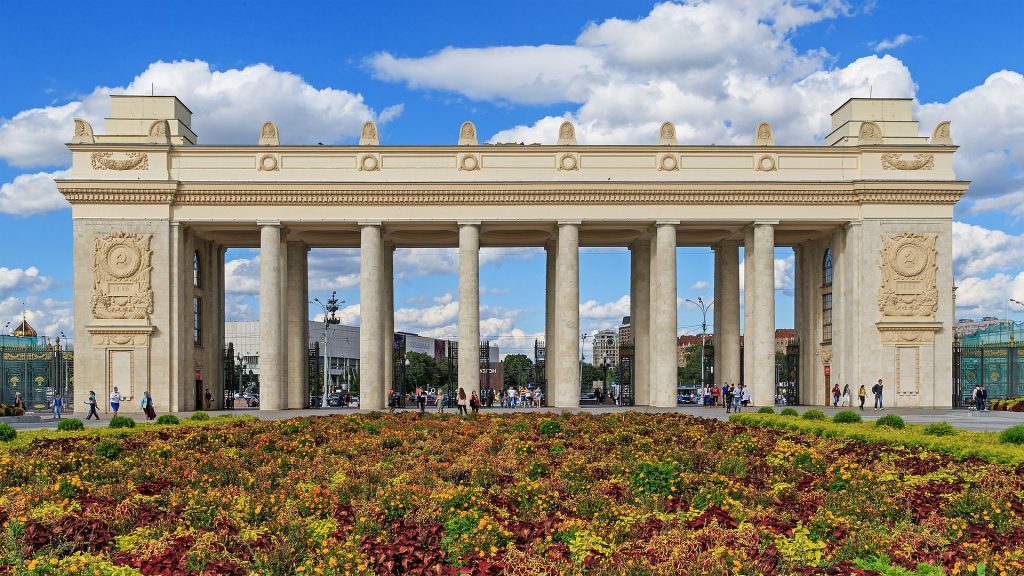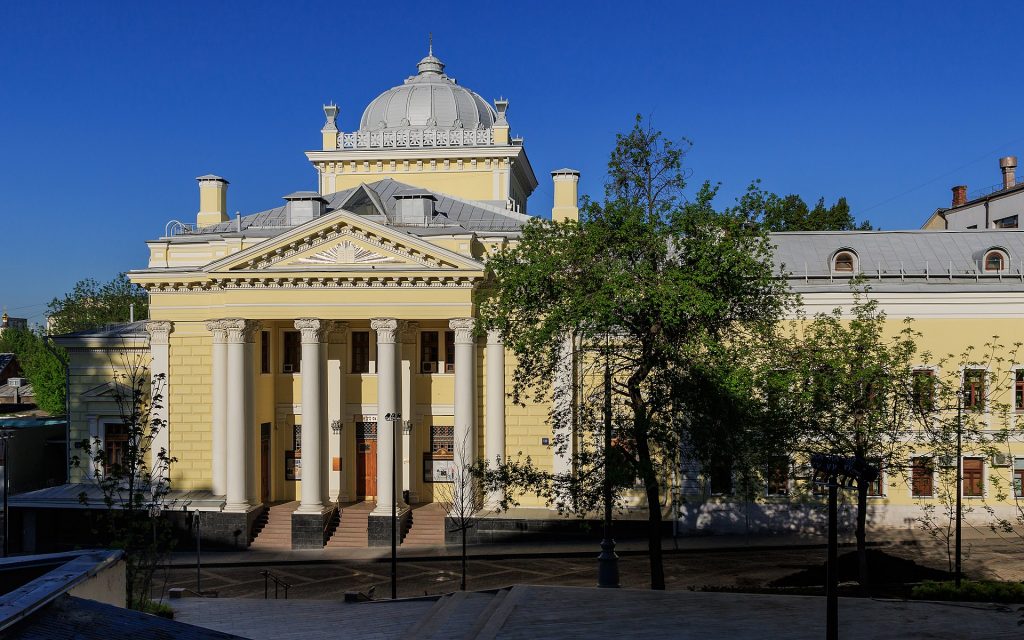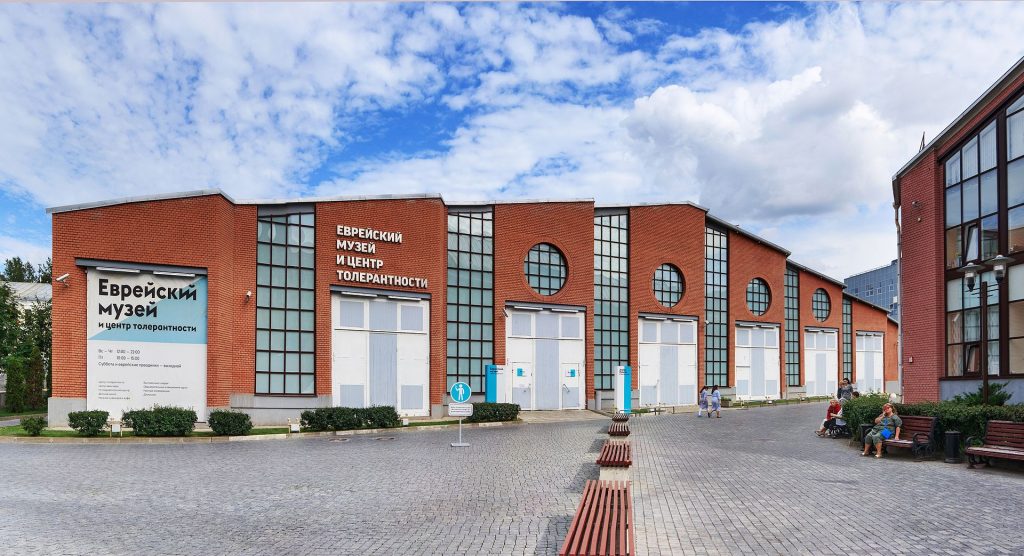
Due to the expulsion of Jews from Russia and their strict confinement within the “residential zone”, they were few Jews in Moscow prior to 1900, which explains the absence of a Jewish quarter in the capital. The 1902 census lists 9048 Jews in Moscow, or well below 1% of the city’s population.
The synagogues
With columns worthy of a Roman temple, the Grand Choral Synagogue was built in 1891 in neoclassical style following a design by the architect Simon Eibushitz. Procrastination by the government and various restrictions imposed by the czarist regime delayed its official opening until 1906. It had hardly been completed, in fact, when a ukase issued by Moscow’s new chief of police expelled Jewish tradespeople from the city and forced the community to either sell the synagogue or convert it into a “charity organization” before 1 January 1893.

The government at first hoped to install a trade school in the building but changed its mind and allowed the Jewish community to open a Talmud Torah school here instead. Authorization was finally granted in June 1906 for the completion of interior work necessary for the building’s use as a synagogue, a task entrusted to an architect by the name of Klein. It has been continuously active ever since, on a quiet street behind Kitay Gorod.
What is now a Chabad Lubavitch Synagogue was founded in 1883. It was presided over by Rabbi Moshe ben Itshak-Ayzik, who was gunned down in 1938. Reopened fifty years later, today it serves the Orthodox Jewish community. An interesting Jewish bookstore is located inside.
The Chaverim synagogue and community centre was inaugurated in 2012 by the Lubavitch movement and with the support of the Jewish Federation of Russia . Located next to Moscow University, it welcomes many students. The centre offers regular services on Shabbat and holidays, an educational centre and a cafeteria. There is also the Moscow Community Centre , which is largely attended by English-speaking expatriate communities and Israelis, and the Liberal Moscow Community Centre , which is reformist and focuses its activities on families and children.
The hidden synagogue
During the Soviet era, the address of Moscow’s Grand Synagogue was kept secret. A 1988 guidebook thus presented the site in the following terms: “The building, with its ceremonial colonnade (at number 10) was built in the mid-1890s by Eibushitz (interior by Klein, 1906). In 1948, the synagogue welcomed the first Israeli ambassador, Golda Meir.
Muscovite Jewish life
In the years following the First World War and the October Revolution, Jews left the former “Pale of Settlement” and began pouring into the new capital. In 1917, 60,000 Jews lived here, or 3,5% of the population; by 1932, they had reached 86,000, or 5,6%, and by 1939 they numbered 250,000, or more than 6%. This included many intellectuals and innovative artists, writers like Ehrenburg, Grossmann, and Peretz Markish; filmmakers like Sergey Eisenstein; theater personalities such as Alexander Granovsky and Solomon Mikhoels; and painters like El Lissitzky and Marc Chagall.

One of Moscow’s major Jewish intellectual haunts in the 1920s was the GOSET, the Jewish State Theater founded by Alexander Granovsky; Marc Chagall worked as a set designer there, soon followed by Faltz and Altman. Among actor Solomon Mikhoels’s greatest successes was the production of Mendele Moykher Sforim’s The Travels of Benjamin III in 1927. The theater was located in Malaya Bronnaya, near Tverskoy Boulevard, at the site of the present-day Na Maloy Bronnoy Theater. Such intellectual ferment was smothered in the late 1920s and completely extinguished in the 1930s with the closure of Yiddish schools in 1935 and the later prohibition of all Jewish cultural life. Jewish life would have to wander fifty years in the desert before its rebirth in Moscow.
So, after fifty years in the wilderness, Jewish life has been reborn in Moscow in recent years. The Museum of Judaism and Tolerance opened its doors in 2012. The permanent exhibition presents the history of Russian Jewry from Catherine II to the present day in an interactive way. The museum also offers educational programmes, temporary exhibitions and conferences.